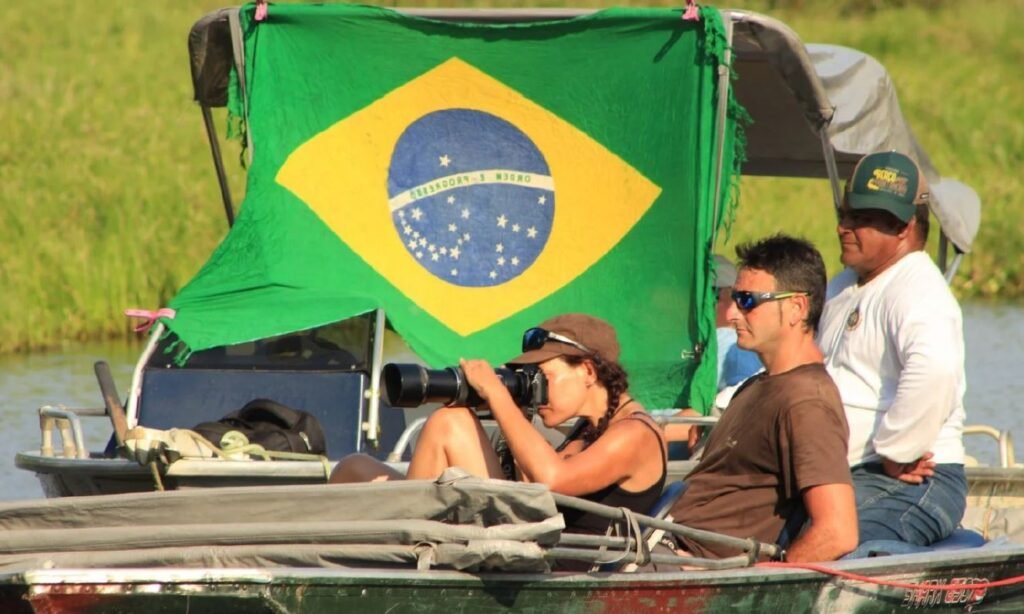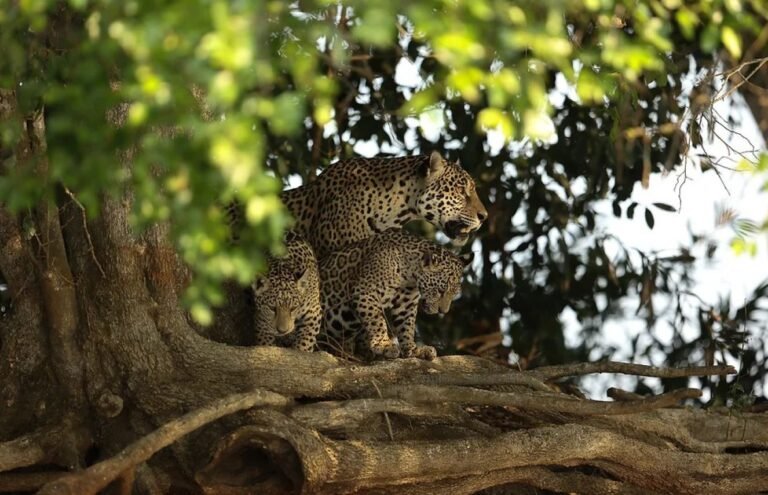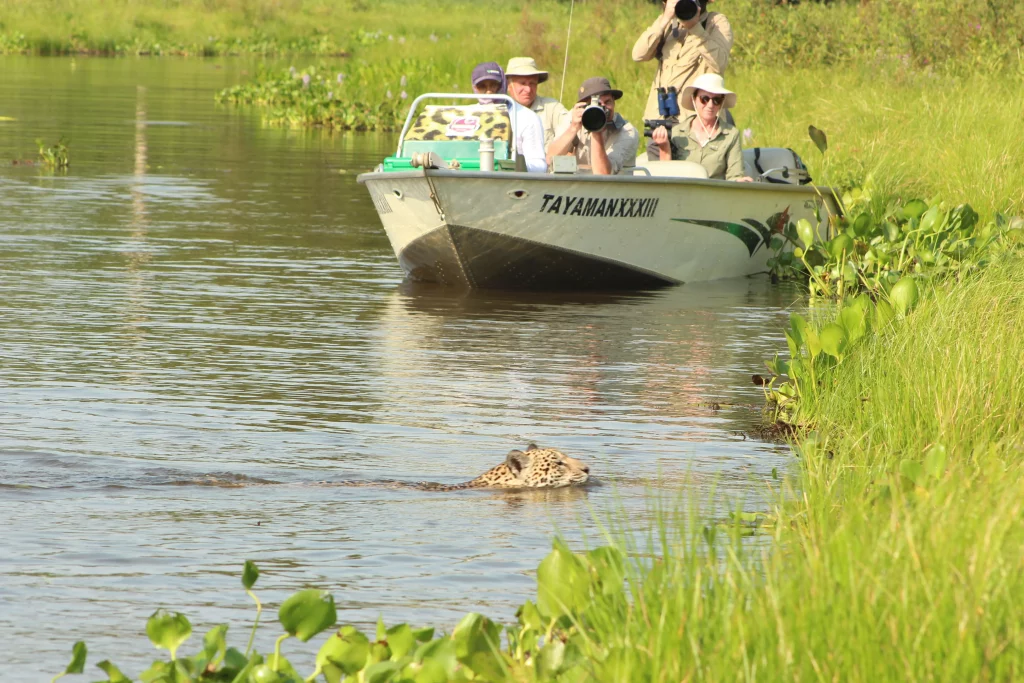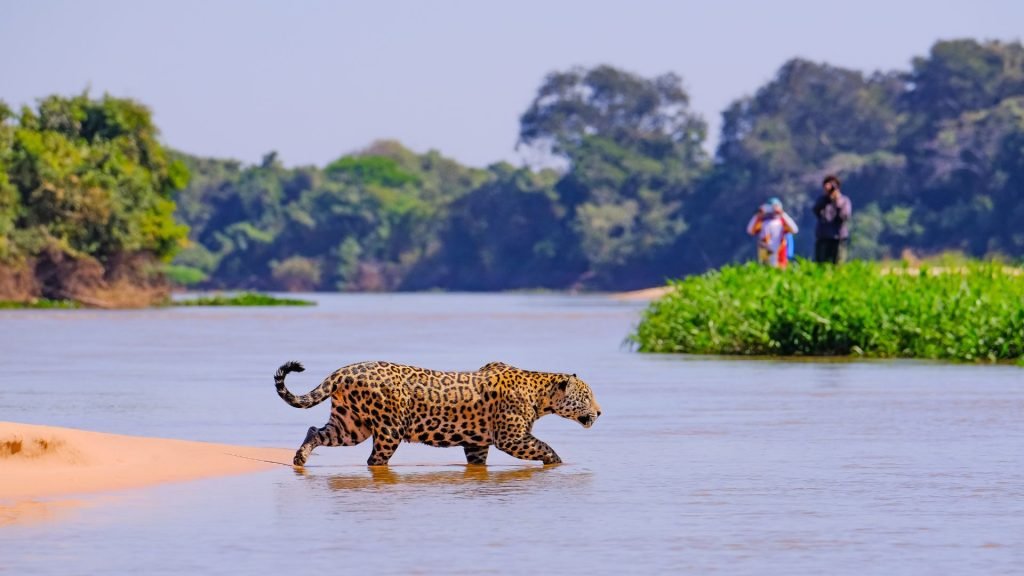The best time to see jaguar cubs in the Pantanal is one of the most anticipated moments for wildlife enthusiasts. However, certain times of the year offer an especially magical experience: the chance to observe adorable jaguar cubs. Knowing the best time to witness these young felines is crucial for anyone looking to experience this one-of-a-kind encounter with wildlife.
1. The Jaguar Breeding Season: Perfect Time to See Jaguar Cubs in the Pantanal
The best time to see jaguar cubs in the Pantanal is linked to the jaguar breeding season. Jaguars reach sexual maturity between 2 and 3 years of age. Although mating can occur year-round, an increase in courtship activity is observed during the rainy season, which lasts from November to March.
Birth of the Cubs: After a gestation period of approximately 93 to 105 days, females give birth to between 1 and 4 cubs. Most births happen between December and March, meaning the best time to see cubs is from February to April, when they begin to emerge from their hiding places.

2. Characteristics of the Wet Season: The Best Time to See Jaguar Cubs
The wet season, spanning from November to March, is an especially suitable time to observe jaguar cubs in the Pantanal. During this period, the environment becomes more lush, and wildlife activity increases, offering several advantages:
- More Water, More Life: Rivers and wetlands fill up, attracting more prey such as capybaras, deer, and birds. With more food available, jaguars can better care for their cubs, teaching them to hunt and explore their surroundings.
- Visibility: Although the vegetation is denser, access roads become easier to navigate, and the rains may make it easier to spot animals searching for water.

3. The Ideal Time to See Jaguar Cubs in Their Natural Habitat
Jaguar cubs are undoubtedly one of the most heartwarming spectacles the Pantanal offers. During February to April, it’s possible to see these young felines playing, exploring, and learning from their mothers.
- Social Behavior: As cubs grow, they begin to interact with each other, playing and developing hunting skills. This behavior is fascinating to observe, as young jaguars are very curious and playful.
- Mother Interaction: The jaguar mother is very protective and cares for her cubs during their first year of life. Observing this interaction between mother and cubs provides a memorable experience for wildlife lovers.

4. Tips for Wildlife Observers: Spotting Jaguar Cubs, When to Go?
If you’re interested in spotting jaguar cubs in the Pantanal, here are some tips to maximize your experience:
- Choose a Good Guide: Opt for a guided tour with a local operator who knows the area well and has experience in spotting jaguars. An experienced guide can take you to the best locations, increasing your chances of seeing these magnificent felines.
- Be Patient: Wildlife observation requires patience. You’ll often need to wait to see the jaguars, so be ready to enjoy the beauty of the Pantanal while you wait.
- Bring Binoculars and a Camera: Don’t forget your binoculars for distance viewing and a camera with a good telephoto lens to capture those special moments.
Seeing jaguar cubs in the Pantanal is a unique experience that every wildlife lover should have. The best time for this observation is from February to April, coinciding with the breeding season and the birth of cubs. While jaguars are difficult to spot, with a bit of patience and a good guide, you’ll have the opportunity to witness the majestic life of these felines and their young in one of the world’s richest ecosystems.
Frequently Asked Questions

1. When is the best time to see jaguar cubs in the Pantanal?
The best time to observe jaguar cubs is between February and April. This period coincides with the breeding season and the birth of cubs.
2. Is it easy to see jaguars in the Pantanal?
Seeing jaguars can be challenging, but with a good guide and a little patience, it is possible to spot these magnificent felines, especially during the wet season.
3. What should I bring on a jaguar-watching excursion?
It’s recommended to bring binoculars, a camera with a good telephoto lens, comfortable clothing, and insect repellent. Be prepared to wait patiently while observing the wildlife.



